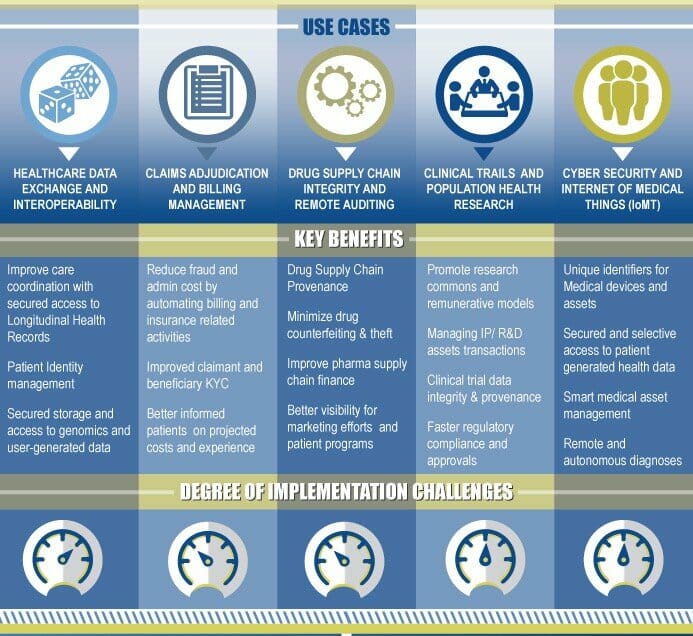
Time is undoubtedly an essential element in the field of healthcare and it can be reasonably be assumed that every moment should be used to its full potential in treating the patient. This is clearly not what is happening; just recently a mother had to wait seven hours after a fall before doctors could come and treat her broken back. Gaps in the healthcare system
have given rise to multiple issues, ranging from the privacy of medical records to waiting times.
Firstly, substantially long waiting times have always been a prevalent issue and the last few years are not an exception. In 2018, the NHS reported that a decade-high 4.3 million patients were awaiting an operation, with a growing number of them having to wait for more
than the 18-week maximum waiting time for ‘planned non-urgent surgery’, such as a hip or knee replacement. This year has not been kinder as nearly 330,000 patients had to wait longer than they should have in the month of January alone. In fact, even the waiting times of the seemingly prioritised, urgent AEs in England have reached their worst levels since records began.
Cancer patients were affected especially hard as a monthly number of over 18,000 suspected cancer patients in England could not see a specialist or start their treatment procedures within the prescribed timescales. Therefore, in order to overcome the dangers of enduring overly-long waiting times, many patients have naturally drifted towards seeking private treatment. Such treatment, however, can prove very costly; for example, the cost of a private hip replacement ranges from £8,945 and £14,880. Thus, patients might be forced to take out loans or spend their savings in order to afford the treatment they were originally entitled to.
Moreover, waiting times do not just impact costs, but also affect privacy. The Independent reported that doctors were pressured into ‘manipulating patient records to meet A&E targets’, as patients are required to wait no more than 12 hours before being admitted to a ward. The way in which patient records are manipulated is by attempting to relocate patients
to different areas of the hospital or to discharge and then to readmit them to ‘reset the clock’. This is not just a matter of fraudulent activity on the part of hospital staff; these alterations of medical records put an unnecessary risk upon the patients.
The Netherlands faced a similar problem when it was leaked this February that students working at a hospital were given complete access to the medical records system as a result of a mistake in the software, enabling them to read the ‘juicy details’ included in the personal files of many patients, for their own entertainment.
Finally, a common issue in healthcare is that doctors do not always have the medical records of the patient, especially in situations where the individual has traveled or sought private treatment. Consequently, the time to treat the patient is unnecessarily prolonged and even when the medical assistance is over, updating the patient’s records is also a hassle.
As Medicalchain’s Dr. Albeyatti mentioned, he “was becoming increasingly frustrated” with the lack of availability of medical records.
Perhaps, it is the time to develop a digital system, which would enable each patient to have full control over who is allowed to access their medical records. The Dutch government attempted to develop such a system but was halted in light of some privacy concerns, similar to the aforementioned incident this month. Is it now the case that a system aiming to promote the availability of medical records cannot be reconciled with privacy? Is there a way that such a system can be time efficient? One possible solution is blockchain.
What is blockchain?

Blockchains are permissionless distributed databases or permissionless public records of transactions in chronological order. Blockchain technology creates a decentralized digital public record of transactions that is secure, anonymous, tamper-proof and unchangeable — a shared single source of truth. Blockchains can, thus, apply to any industry where information is transferred. It removes the needs for middle-men in a transaction, establish consensus and most importantly are speedy while being extremely secure.
Blockchain based solutions
First, to combat the issue of the privacy of medical records, John Halamka, the Editor-in- chief of the new academic journal ‘Blockchain in Healthcare today’, suggests that when a medical record is generated and signed, it can be written to the blockchain. This will provide absolute proof and confidence that a medical record cannot be changed. The integrity of the medical record is ensured and the same concept can be applied to clinical trials. This has an impact in legal cases, as well as where the integrity of the medical record is pivotal. Since the blockchain is immutable and traceable, patients can easily send records to anyone without the fear of data corruption or tampering. Furthermore, blockchain could also attempt to ease concerns about the accessibility and the consent to access medical records.
Let us consider the current healthcare environment in the US where every state has different privacy and consent regulations. Blockchain could be
used to record patient consent for purposes of data sharing. Any party seeking to exchange medical data about a patient could check the blockchain for the permission to do so. The patient can have some control over how their medical data gets used and shared by the institutes. Any party which is looking to get the medical data about a patient could check with
the blockchain to get the necessary permission.
Moreover, blockchain could be extremely useful in cutting down high costs and long waiting periods which would ensure more efficient and stable functioning of the sector. Greg Matthews, the founder of MDigitalLife anticipates that blockchain could make a big impact by
enabling health outcomes that take a 360° view of the patient’s genetic profile, their demographic and socioeconomic status, the behaviors that impact their health, and their response to different treatments or combinations of treatments. Matthews continues, “This data exists today in one form or another but can be tremendously difficult to stitch together
at an individual level. Blockchain can enable “profile stitching” and do so in such a way that the patient’s identity is protected.” This saves individual medical staff a large amount of time and energy that they would otherwise spend on having to find this information themselves.
Other indirect ways in which blockchain could be used to increase the efficiency of the industry are the following:
1. Patients can be incentivized via a reward mechanism. For example, they can get tokens for following a care plan or for staying healthy. Also, they can be rewarded by tokens for giving their data for clinical trials and research.
2. Various medical institutes around the world conduct their own research and clinical trials on various new drugs and medications. A blockchain will help create a single global database to collect all this data and put them in one place, making it widely accessible in no time.
3. Lastly, pharma companies need to have an extremely secure supply chain because of the kind of products they carry. Pharma drugs are consistently stolen from the supply chain to be sold illegally to various consumers. Also, counterfeit drugs alone cost these companies nearly $200 billion annually. A transparent blockchain will help these companies to enable
close tracking of drugs to their point of origin and, consequently, help eliminate falsified medication.
There is no denying that blockchain has opened a range of opportunities and the field of healthcare is no exception. With many calling for the restructuring of the current model of the industry to ensure its sustainability, and especially with a House of Lords committee report
encouraging the implementation of technological innovation into the industry, it seems that perhaps blockchain is the proper step to take to perfecting the field of healthcare.
Bibliography
Jeanette Mariani: https://www.nextavenue.org/broken-hip-fast-decline/
Mortality Rate doubles after broken hip:
W.H.O: https://www.who.int/news-room/fact-sheets/detail/falls
Mother waiting 7 hours:
ambulance-waiting-times-marion-nash-broken-back-lancashire-a8251451.html
2018 Long wait 4.3 million:
waiting-lists-reach-10-year-high-at-43m-patients
2019 330,000 patients:
reach-worst-15830631
Cancer patients:
multiple-targets-for-cancer-treatment
Seeking private treatment:
misses-multiple-targets-for-cancer-treatment
Doctors pressured into manipulating data:
records-figure-manipulate-a-e-hospitals-a8172996.html
Student breach of medical records in the Netherlands:
https://www.dutchnews.nl/news/2019/02/major-privacy-breach-students-could-access-
hospital-medical-records/
What is a Blockchain?:
blockchain.html
Privacy of medical records through blockchain:
healthcare/#431300f6553d
Blockchain in increasing efficiency:
https://blockgeeks.com/guides/blockchain-in-healthcare/
Call for reforming the entire healthcare structure:
https://academic.oup.com/annonc/article/28/8/1751/3768079
House of Lords Report:
Social-Care.pdf
Authors
Chin Kei Ma: A Hongkonger and a Taiwanese national, CK is currently a law student at King’s College London with an interest in law, science, and technology.
Sandli Pandey: Sandli is currently a first-year law student at King's College London. Among other things, she is extremely interested in understanding the impact emerging technological
developments could have across business verticals.
KCL Blockchain is a student organisation operating out of King’s College London. Our strong team of Blockchain researchers and developers comprises of Technical, Legal and Business oriented individuals.
At KCL Blockchain, our aim is to get people excited about Blockchain technology. In addition to writing about Blockchain, we accomplish this task by organising exciting, engaging, and in-depth events to share with you the latest insights in the world of Blockchain. We are also conducting research in these areas, partnering with companies, and fostering the education of our technical members.
Get in touch with us on Facebook, LinkedIn or Instagram:
https://www.kclblockchain.com/










